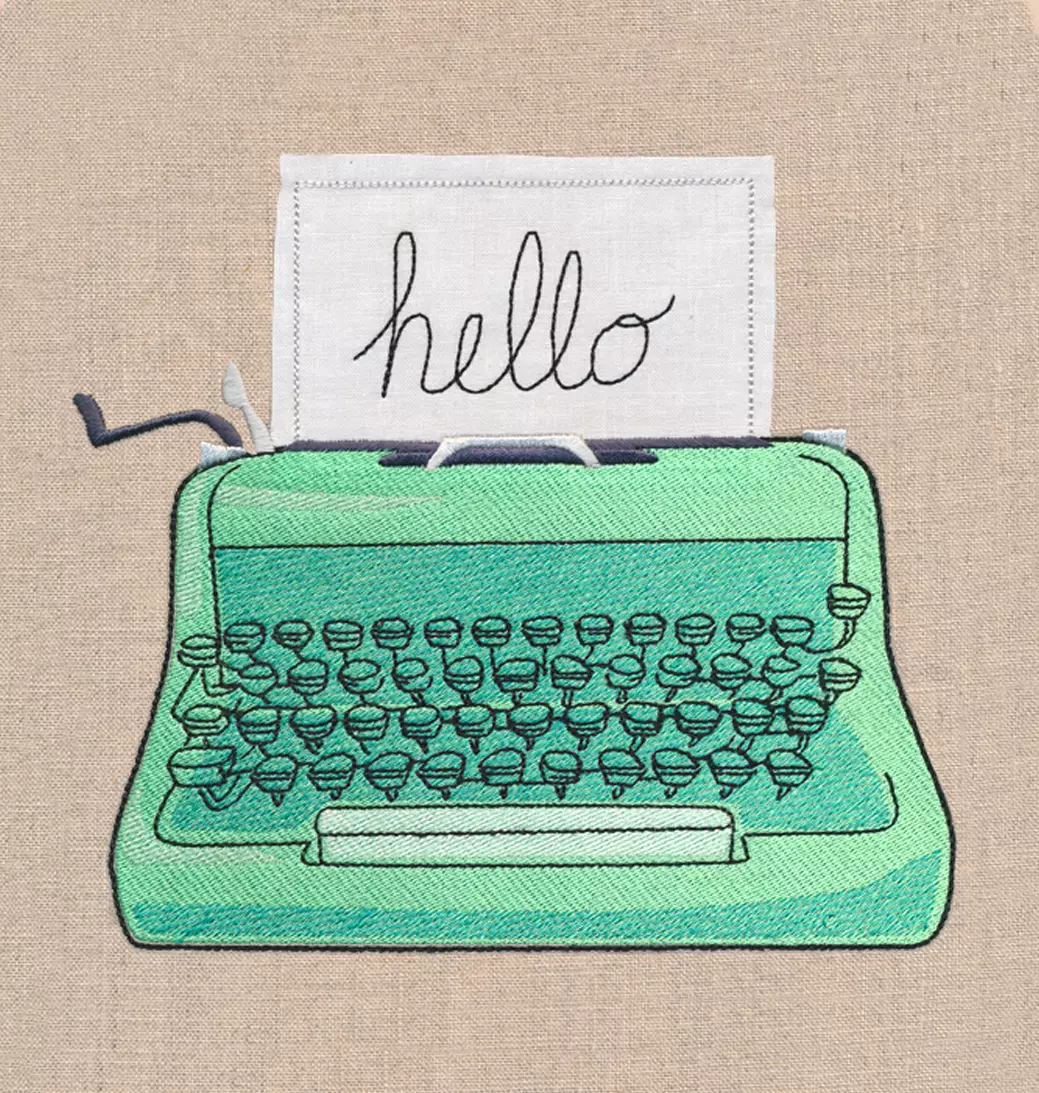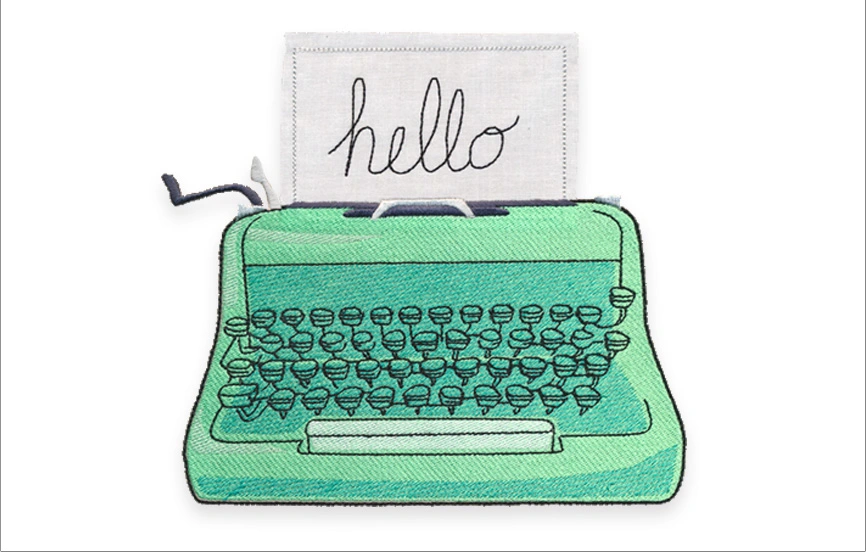Let ethereal decor, accessories, and other beautiful projects bloom with this unique flower embroidery design! Layers of freestanding organza stitch together in the hoop to create a sheer and beautiful bloom. We'll show you step-by-step how to stitch your flower together!
Supplies
To create your freestanding fabric flower, you'll need:
- Pretty Petals Flower (Freestanding Organza) embroidery design
- 1/4 yard of organza
- Embroidery thread
- Scissors
- Temporary spray adhesive (such as Gunold KK100)
- Water-soluble stabilizer (like Vilene or Sulky Ultra Solvy)
Designs Used

These flowers have been specially digitized to sew on organza hooped with a piece of water-soluble stabilizer. After the excess organza is cut away and the stabilizer is removed, beautiful embroidery and organza remains.
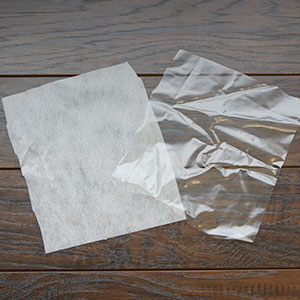
There are a couple of different kinds of water-soluble stabilizer. One is clear and plastic, and that brand is Sulky Ultra Solvy. The other is soft and fibrous, called Vilene. Both work well. Vilene is used in this demonstration.
Use a size 11 or 75/11 sharp sewing needle. A sharp sewing needle has a smaller, finer point than an embroidery needle. That means it will make smaller holes in the stabilizer.
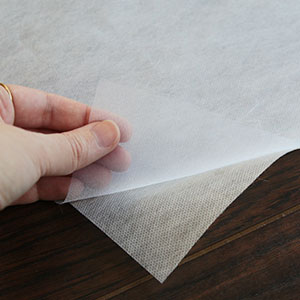
Cut a piece of both organza and water-soluble stabilizer that are larger than the hoop. Spray the water-soluble stabilizer with temporary adhesive, and smooth the piece of organza on top of it.

Hoop the organza and water-soluble stabilizer together firmly. Make sure it is nice and taut with no wrinkles.
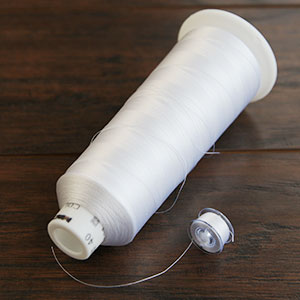
As these flowers will be seen from both sides, wind a bobbin to match every thread color used in the design.
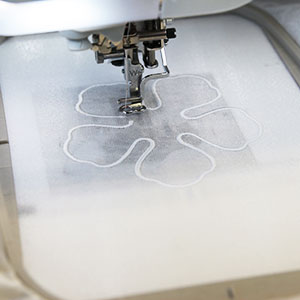
It is very important to sew the embroidery files in order (file "a", then file "b", then file "c", and so on).
This is important because the final file will sew all of the layers of organza together. Attach the hoop onto the machine, and load the first embroidery file (file "a"). Follow the color change sheet, and begin to embroider the design.
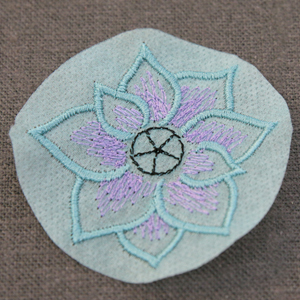
Some layered organza designs have additional details or shading, but not all of them do. All files have embroidered borders which show the outer edges of the organza piece. These borders will also act as a guide for cutting out the piece once the design has finished.
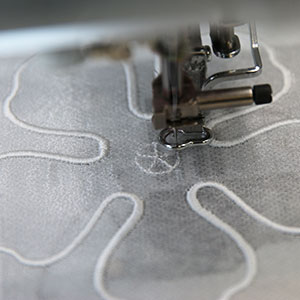
The "petal placement dieline" will embroider next. This sewn dieline will show how to position this petal piece (file "a") on top of the second embroidery file (file "b").
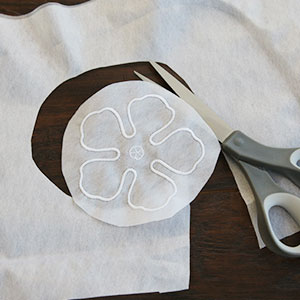
Once all the embroidery is finished, unhoop the embroidered organza and stabilizer.
Leaving a 1/2" margin of organza around the embroidery, cut a circle around the embroidered borders. Do not cut perfectly around the borders yet, as some embroidery details in the final file (file "b") may sew over or past the border of this organza layer (file "a").
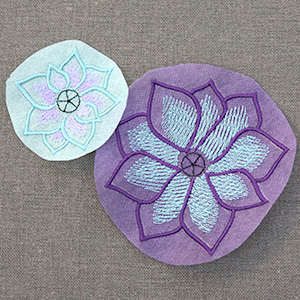
Some layered organza designs have three layers (files "a", "b", & "c") instead of only two (files "a" & "b").
If your design has three layers, repeat the previous steps to embroider all of the second layer (file "b"), and cut it out. If your design has only two layers (no file "c"), simply skip this step.
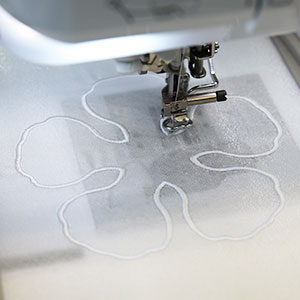
After the first organza layer is sewn out, hoop another piece of organza and water-soluble stabilizer that are adhered together with temporary adhesive.
Still matching all bobbins, embroider the border as well as inner details, if there are any.
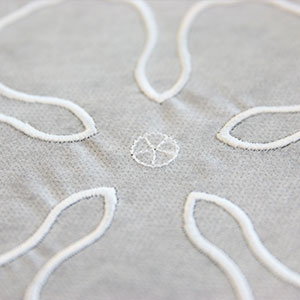
Then embroider the "petal placement dieline". This will show where to place the first embroidery piece (file "a") on top of the second piece (file "b").
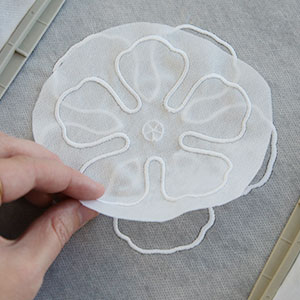
Do not unhoop the final layer.
Select the the organza layer that is meant to sit on top of the final layer. For designs with two files, file "a" will be placed on top of file "b".
For designs with three layers, first file "b" will be placed ontop of file "c", and file "a" will be added later.
Spray the wrong side of the correct layer with temporary adhesive. Lay it on top of the hooped, final layer with the wrong side facing down against the right side of the hooped layer.

The "placement dieline" is a circle with a star inside. To place the layers correctly, match up the edges of the circles, and then rotate the top layer until the points of the stars match up as well.
Matching up the points of the two stars will allow the layers to be properly lined up.

Then place the hoop back on the machine, match the bobbin, and embroider the "top petal tackdown". This will adhere the added layer in place on top of the hooped layer.
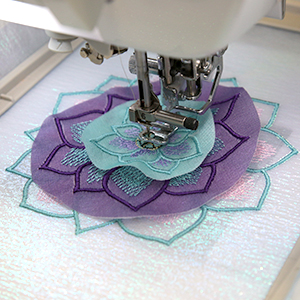
For designs with three layers, repeat the previous steps to spray and place the final "a" layer on top of the "b" layer. Rotate the top layer until the placement dielines match up. Then embroider the final tackdown step.
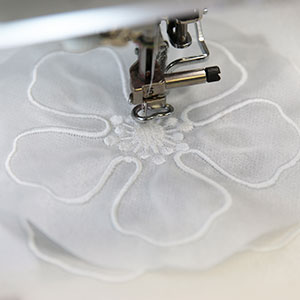
Follow the color change sheet, continue to match all bobbins, and embroider the remaining center details.
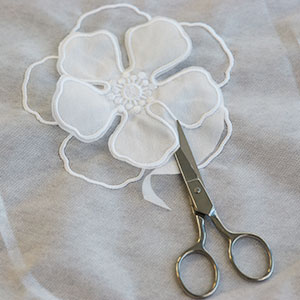
Once all the embroidery is finished, unhoop the flower, and carefully cut around the outer edge of the "flower borders".
Cut as close to the embroidery as you are comfortable, but make sure not to cut into the embroidery. If you accidentally cut the embroidery, using a small amount of clear fabric glue can help adhere the stitching in place so it does not unravel.
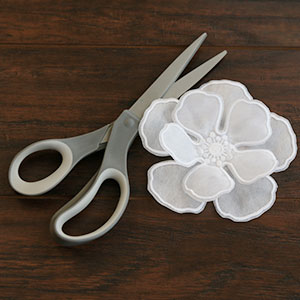
Continue to carefully cut around the outer edge of the "flower borders" until both the "a" and "b" petals are all cut out.
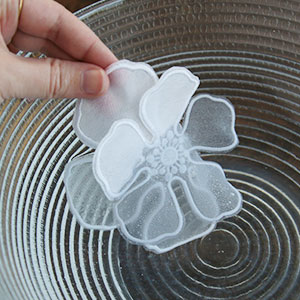
The stabilizer's packaging should give instructions for removing the remaining water-soluble stabilizer. For Vilene, soak the embroidered flower in water for a few hours.
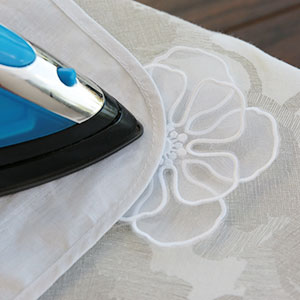
Allow the flower to air dry. If needed, press the flower with a pressing cloth on top to remove any wrinkles in the organza.
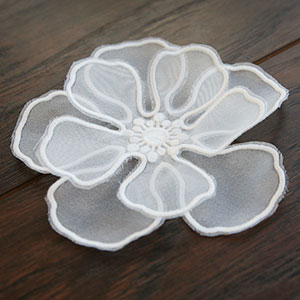
Fold or curl the organza petals up as desired. Once curled up, the petals can even be hand-sewn or glued together where they touch (or overlap) to create a more dynamic, 3D flower.

